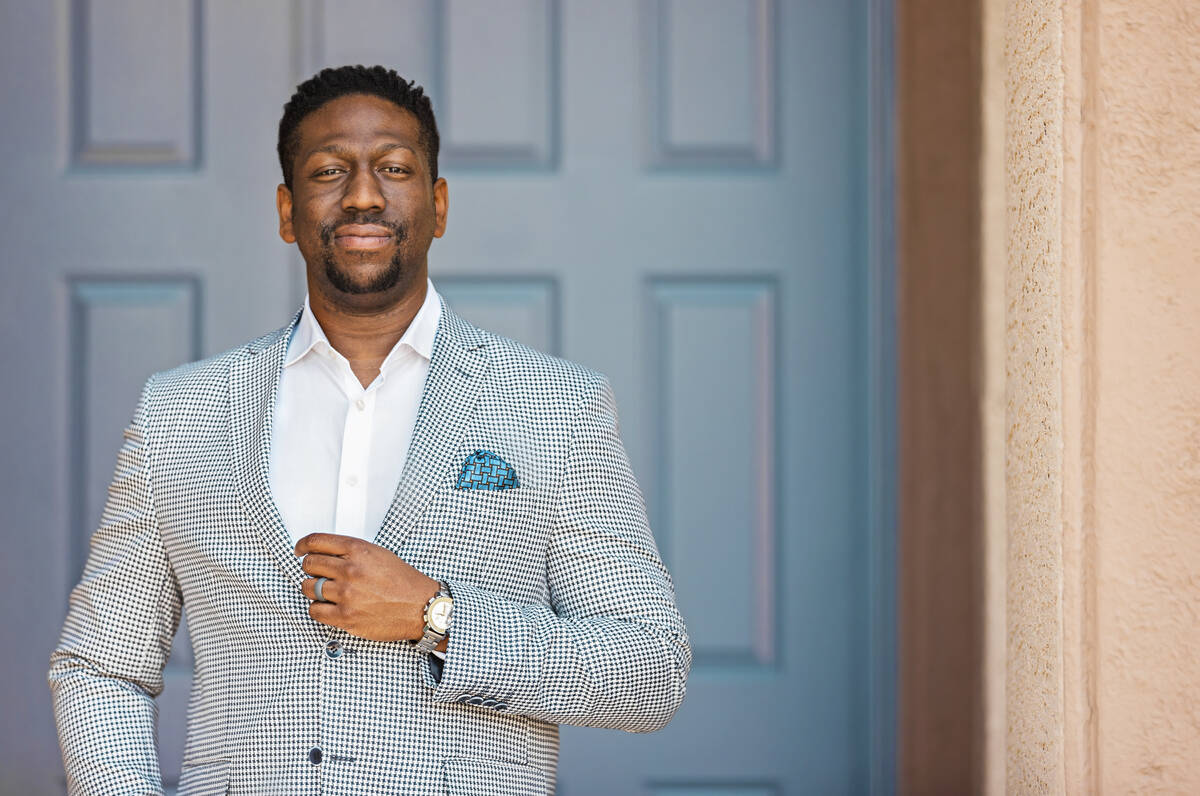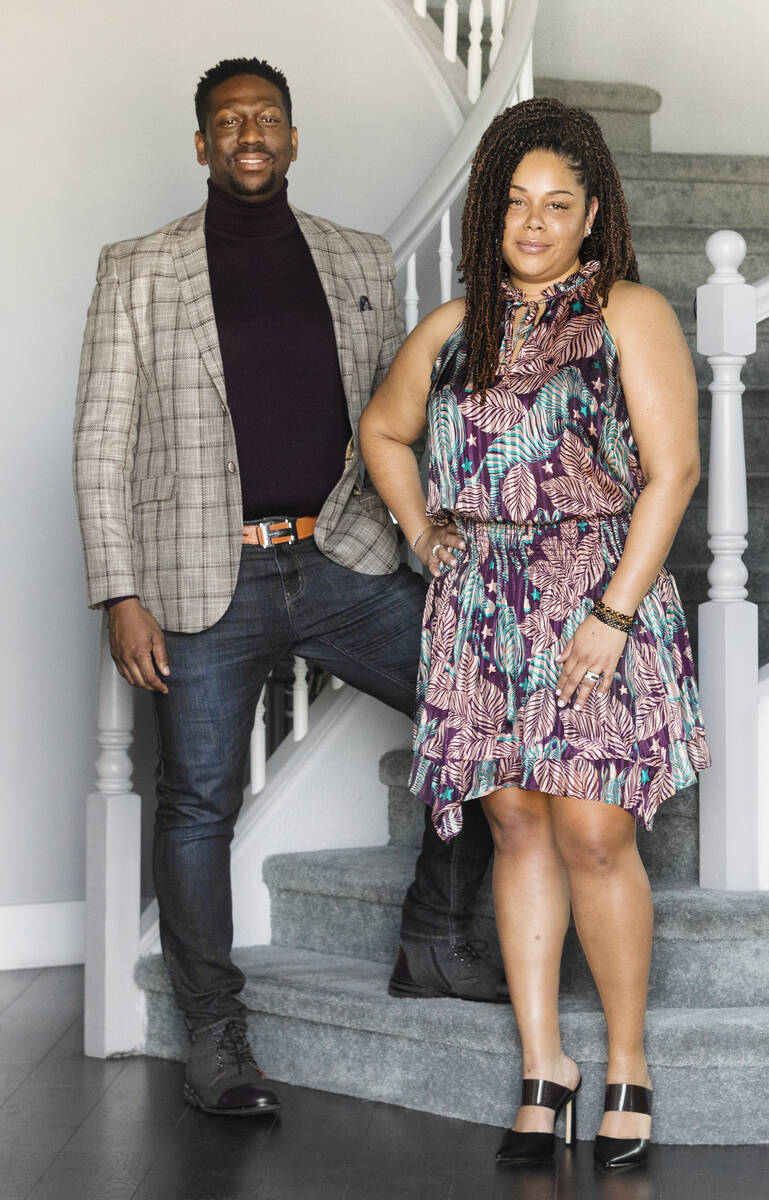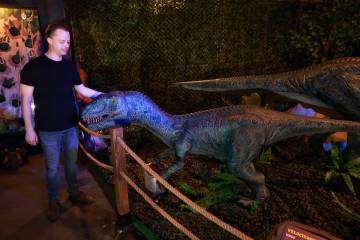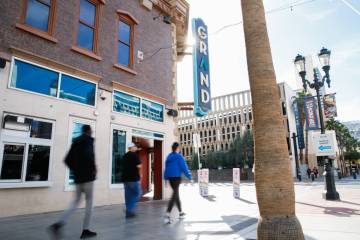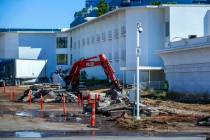Unexpected career paths led Henderson couple to leadership jobs
Ashanti and Tyre Gray did not expect their career paths to lead to where they are now.
The Henderson couple started their careers in call centers and classrooms, respectively. But open and curious minds led them to trailblazing positions.
For Ashanti, an accidental interview for a 911 operator led her to eventually become the first Black female assistant fire chief for Las Vegas Fire and Rescue. And Tyre’s career changes from teacher to lawyer to the first Black president of the lobbying group Nevada Mining Association all came from a willingness to use his skills on something new.
The Grays sat down with the Review-Journal during Black History Month to talk more about the intersection of leadership and race in their respective fields. The interview has been edited for length and clarity.
How did you both get to where you are?
Tyre: I always say that my life is what happens when you say yes to random questions. I can’t say that I necessarily set out on a path to become the president of the Nevada Mining Association. But I can say that as a child, my mom always told me I could do anything.
I believe that everything that I said yes to actually prepared me to be in this role. So, whether you look at me as an educator or you look at me as working in hospitality or as a practicing lawyer, I picked up a diverse skill set that just really allowed me to be able to ascend where I am today.
Ashanti: As an adult, I realized I really liked to help people develop. I felt like a leadership position was where I was able to do that. I’ve always always tried to help people enjoy their job — part of enjoying your job was being good at it.
When I came into the fire department, I would work with people that were around me because they always felt like, “This is where I’m gonna end up.” As I progressed as a supervisor and went to trainer, I was always developing, putting teams together. I feel like I’m good at bringing diverse groups of people together, with different personalities. So when this position came open, I realized that I could just do it at a greater level and have more of an impact.
Tyre, you are the first Black president of the Nevada Mining Association, and Ashanti, you’re the first Black female assistant fire chief. What has that meant, both emotionally and in practice?
Ashanti: Being the first, it’s a big deal. One of the things my husband and I often talk about is we’re surprised there’s still opportunities to be first, so we don’t take that lightly. We always talk about how we stand on the shoulders of giants. We recently had an event where we recognized Black firefighters in departments throughout the state. I wanted them to realize the shoulders of the giants are in the room with me. I see you. I’m not talking about the people who have done it decades ago and are no longer with us. I wanted them to appreciate that you paved the way for me and I want you to hear it from me that I appreciate you.
More than that, I want people to know that I’m here so people can stand on my shoulders. Because I work in a male-dominated industry and I’m Black, I have both of those things where people look at me and go, “Wow, how does she handle that?” I handle it like I do everything else: confidently and I ask questions. I’m not afraid to say if I don’t know something, that I need to learn something. But I think it’s really important for people to see us and to understand that it’s possible.
It’s just a job for me. I think it impacts people who see me more than it impacts me. Because I tell people all the time, I’m just Ashanti. I don’t wake up and think, “Oh, I’m Black.” Doesn’t occur to me. It’s not about my ethnicity. It’s about what I can contribute and bring to the table. How will I do my job and how can I inspire others to do their job?
Tyre: To me, it would be tone-deaf for us to say that our lives are not impacted by race and the way in which we move through the world. The initial interaction that anybody has with me is not, “Oh, he’s a lawyer and a business executive.” I’m a Black man, and I appreciate that. I’ve been that every day in my life, and I’m proud of that.
When you think about mining, that grizzled image of an old white dude with a beard and pickax just comes to mind. When I say I’m the president of the Nevada Mining Association, I get some variation of “Oh, really?”
I recognize that I have to perform in a way that is unimpeachable. We all would like to think that we are judged on our individual merits, but the truth is that we’ve all heard some level of the statement before: “We tried that before.” That will not be me in this instance. So, I am very cognizant of the fact that I make sure that every single day I’m giving my best and every single day that I’m prepared, because I recognize that I’m representing myself, I’m representing my family, but I’m also representing little boys and girls that I have yet to meet.
What does it mean to be intentional about diversity and how do you forge paths for others?
Tyre: Take any business. If you were not performing well in your marketing department, you would call a meeting and you would discuss it. When you do an analysis of where you are from a diversity perspective, meet that head-on.
I think that’s the way we have to approach hiring. If we want to see more diversity, then we need to go into diverse areas. We need to work with diverse clubs, organizations at schools. That doesn’t mean that you’re only targeting people of diverse backgrounds, but you’re making sure that it actually gets to them.
If you ask the majority of people who function in corporate America, they’ll tell you they got this job because they knew a guy who knew a guy. If you come from neighborhoods like I do, you don’t know those guys or gals. Why should your career opportunity be stunted because you grew up in a different area?
Ashanti: It also needs to be meaningful. One of the things that I often see in conversations and meetings that we have looking at diversity within the fire department is scholarship. That’s great. Send them to school to get their paramedic license, their EMT and all of that. But if you’re giving these scholarships out to people who will not meet the background (requirements), then don’t do it because then it does not have meaning.
If we find that we’re going through the entire hiring process, and the pool that we start off with is different from the one we end up with, there’s something wrong with the process. A lot of the things that I’ve identified sitting through some processes recently is that the evaluation we use for the background has been the same for the past 20 years. Well, things have changed a lot within 20 years, and the things that you evaluate should also change along with that. It’s about doing things externally but also making sure that we’re making the changes internally that matter.
What kind of improvements still need to be made on diversity in your fields?
Ashanti: I think we need to look like the community that we serve. If you take a picture of everyone in the fire department and a picture of the demographics of the area that we serve, it wouldn’t match. To me, that would be a true sign of making strides toward improving diversity within the fire department.
Tyre: We know that diversity and inclusion is important. But it’s really that X component of doing something about it. Name the industry, there’s an underrepresentation of people of diverse backgrounds, not only in regular service but particularly as you matriculate up into leadership.
How does one get to move from line level to senior management? Well, usually it requires somebody to invest in you. Both of us agree, we’ve had wonderful mentors — who didn’t look like us, but who saw a skill set. They really did what we consider to be aspirational of MLK, to be judged by the content of your character not the color of your skin. We have to invest in human capital.
How do you avoid intentionality for the sake of saying, “We did it. We had a conversation about race.” How does an organization make sure they’re still on track?
Tyre: The beauty of business is that there’s always a new way to appeal to people. I think we just apply that to our recruiting and diversity aspects. We focus a lot now in a business community around the people. When you look at the development business, you had the cradle-to-grave era that our grandparents may have belonged to. You find a company, you stay there. Maybe they treat you well, maybe they don’t, but you get your pension. Then you have more of a generation where they have some level of loyalty, but they’ll look for other opportunities. Now, you have our generation where it’s like, where’s the best opportunity?
When you continue to make your business a place where people can have growth, people want to be there. People want to stay and grow with you. So don’t let it go stale, because that’s truly the responsibility of a leader to push forward and not let things drop off. Give your people the tools they need.
McKenna Ross is a corps member with Report for America, a national service program that places journalists into local newsrooms. Contact her at mross@reviewjournal.com. Follow @mckenna_ross_ on Twitter.




